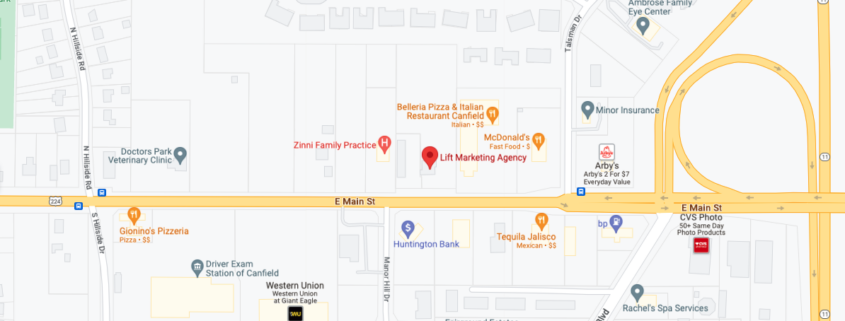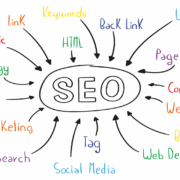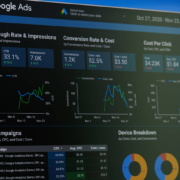When Is It Time For a Local SEO Audit?
If you’re asking this question, it probably means it’s time.
Every local business needs an effective local SEO strategy to maximize visibility (even not-so-local businesses can still benefit). Local SEO makes sure you’re found by those who want to do business with you (without spending an arm and a leg on advertising campaigns that may or may not find your audience). To cut to the chase, your local search rankings should be a top priority. A local SEO audit is a good place to start. Listen to us, the professionals, when it comes to marketing business information.
Table of Contents:
- When Is It Time for a Local SEO Audit?
- The Benefits of Local SEO
- Signs You Need an SEO Audit
- You’ve Never Run an SEO Audit
- Your Traffic Has Dropped
- A GBP Refresher
- You’ve Got More Competition
- Actually Listen to Customers If They Find Online Errors
- You’re About to Update Your Website
- Make It Easier With SEO Tools
- Improve Your Local Rankings
The Benefits of Local SEO
SEO helps you to be more visible in search engine results pages (SERPs) like Google and Bing. Local SEO, specifically, ensures that you’re capitalizing on local SEO ranking factors on your web pages. You can stand out more effectively and ensure that you drive traffic to your website. It can boost sales and leads and deliver a higher conversion rate.
Particularly when you have a brick-and-mortar location, you need to ensure that local customers find who you are, where you are, and what you have to offer.
By dominating the local rankings when searchers look you up in a Google search, you can get the audience you need to run a successful business.
Signs You Need an SEO Audit
Local SEO should be a priority, but it’s often a piece of the puzzle that many small businesses miss. They focus on keywords and high-quality content without focusing on the local aspect. An SEO audit can show you what opportunities you are missing out on and ensure that you’re cleaning up all of your business listings.
You’ve Never Run an SEO Audit
If you’ve never run an SEO audit on your business before, run one immediately. You’re basically throwing away money by not paying attention to SEO.
During the audit, you can find out more about the local target keywords that will help you (and plan your keywords using the Google keyword research planner).
The audit helps you understand more about your online business presence including:
-
- Online reviews
- Business listings and citations
- Google Business Profile
- Local content
- Analytics
- Backlinks (learn about backlinks from Moz)
You may not have as many listings and citations (mentions of your business name in directories and apps) as you may think – and that makes it harder for people to learn about you. So, fix it.
With the help of an audit, you can see what your competitors are doing and establish a better SEO plan moving forward.
Your Traffic Has Dropped
If your website drops off a cliff, you need to find out why. An SEO audit can help you determine your issues – such as if business listings have been updated with wrong information or if your Google Business Profile (formerly GMB, or Google My Business) doesn’t have accurate information.
Updating your Google Business Profile can help you with your search engine rankings. Add photos and make sure you have the correct operating hours, for starters.
And if you find that you have a lot of negative reviews, be sure that you focus on turning the sentiment around as quickly as possible. Read them and respond to them. If potential customers see you interacting by requesting direct messaging to rectify a situation, it can build trust. Plus, showing that you want to fix these issues makes review readers know you’re always making your business better (by using actual customer feedback).
A GBP Refresher
Think of a Google Business Profile as a digital business directory. It includes the following:
-
-
- A business name, address, and phone number
- Business hours
- Website
- Business categories your business falls into
- Reviews
- A Q&A section for both returning and potential customers to ask and answer questions. Owners can chime in, too.
- A map (usually linked to Google Maps)
- Things that your business may have like wifi or outdoor seating
-
For an idea of how it looks, take a peek at our Google Business Profile.
You’ve Got More Competition
The moment you start to get more competition, do a competitor analysis. What does their site look like, and how does it perform? If they did their job, they probably looked at your site and tried to be better than yours — one up them.
For example, if you’re a cupcake bakery and a new bakery moves in across town, you want to ensure that people can still find you in the directories — and pay you a visit.
The local keywords you use may not be enough since you’ll have more direct competition for them. It may require you to get more creative with your shorttail and longtail keywords. Plus, you may want to strengthen your GBP. Do a bit of research to see what your competitors have within their profiles. A few ways to optimize your profile include:
-
- Marking off applicable attributes
- Writing a “from the business” description
- Posting Google posts
- Uploading new photos
- Collecting more reviews
Your local SEO rank is even more critical when there’s more competition in your area.
Actually Listen to Customers If They Find Online Errors
Has a customer ever told you that your online hours are incorrect or that they had to search everywhere for your phone number or website? Finding out about errors in your online listings and citations should trigger you to conduct an audit.
Research some of the other reputable directories and listings, too, like Yelp. Make sure components in your local listing (your name, address, phone number, website, and business description) are accurate.
You’re About to Update Your Website
If you’re planning to update your website with a new design, more pages, or anything else, you should run an SEO audit first. This helps you understand more about what your site does well — and doesn’t do well. Keep what works and redo what doesn’t. It’s cool to reinvent aspects of your brand and evolve as your audience does.
Since a significant part of your local SEO audit focuses on your website, use it to optimize your website so that the SERPs like it. You may find that you need more pages, need to use more keywords, stronger internal linking, update meta descriptions, add alt tags, title tags, or maybe a more user-friendly design.
Make It Easier With SEO Tools
We get it – “audit” isn’t always a fun word. Luckily, there are some local SEO tools you can use.
We talked about Google My Business, which allows you to manage your business information and appear in Google Maps and the local search results. (Use Google Analytics to track metrics so you know how your site’s performing.) You can also look at other software:
- Moz Local – manages local listings on Google, Bing, and even social media
- BrightLocal – tracks local search rankings, reviews, and citations
- Ahrefs – a Rank Tracker helps you track keyword rankings for organic search by as specific as zip code
- SEMrush – another option to track local search rankings and citations.
Improve Your Local Rankings
Your local rank can change at any time simply because of new directories coming online, a change to your website, or even more competition. Knowing when to conduct an audit will help you to find out where you stand and what changes need to be made.
Conducting an audit and figuring out a local SEO audit checklist can be overwhelming. You don’t have to do all of the work on your own. You have us at Lift Marketing. Give us a call or drop a line at our digital marketing agency so we can get started!












